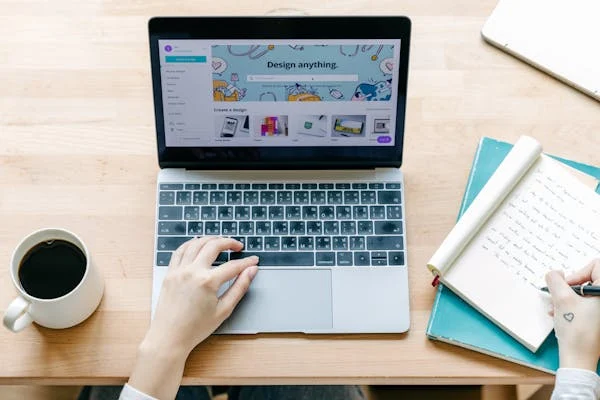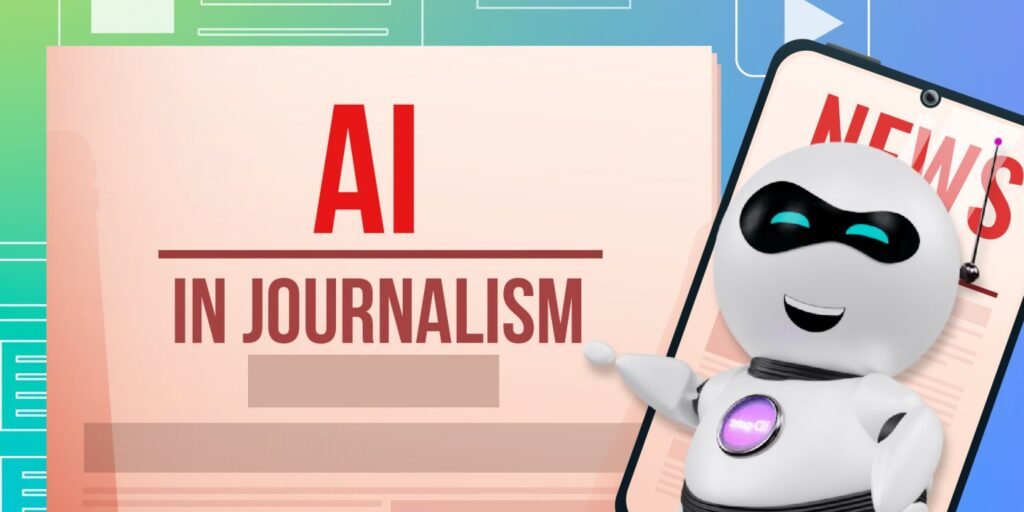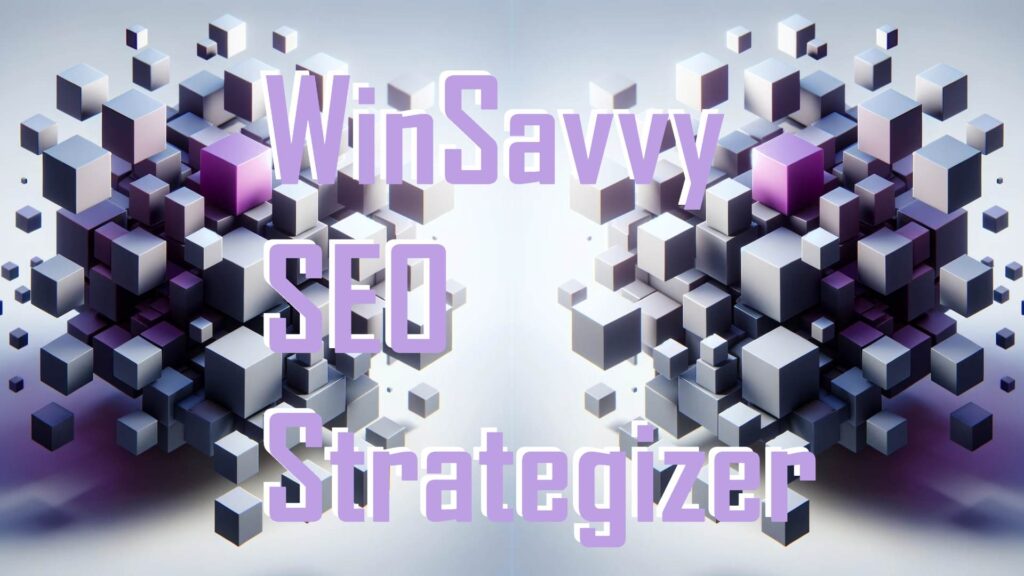This Article has been revised, edited and added to, by Poulomi Chakraborty.
- Understanding User Intent
- Types of User Intent
- Framing Content Around User Intent
- Crafting Content for Informational Intent
- Answer the Questions They're Asking
- Create Comprehensive Resource Hubs
- Understanding the Depth of Informational Needs
- Structuring Content for Clarity and Engagement
- Leveraging Multiple Content Formats
- Ensuring Content Accuracy and Authority
- Engaging with Real-World Examples and Case Studies
- Incorporating User Feedback and Questions
- Enhancing Discoverability Through SEO
- Keeping Content Updated and Relevant
- Measuring Effectiveness and Iterating
- Meeting Navigational Intent with Content
- Make Sure Your Brand is Searchable
- Simplify User Journeys
- Enhancing Website Architecture and Navigation
- Optimizing Internal Search Functionality
- Leveraging Clear and Descriptive Metadata
- Creating Comprehensive and Up-to-Date Sitemaps
- Implementing User-Friendly URL Structures
- Ensuring Mobile Responsiveness
- Utilizing Effective CTAs and Navigation Cues
- Regularly Reviewing and Testing Navigation Elements
- Personalizing Navigation Experiences
- Satisfying Transactional Intent
- Streamlined Purchase Paths
- Clear Calls-to-Action
- Streamlining the Purchase Path
- Crafting Compelling Calls-to-Action
- Building Trust and Credibility
- Personalizing the User Experience
- Providing Clear and Detailed Product Information
- Offering Incentives and Promotions
- Ensuring Exceptional Customer Support
- Analyzing and Optimizing Conversion Paths
- Utilizing Retargeting Campaigns
- Implementing Post-Purchase Engagement Strategies
- Concluding Thoughts
Creating content isn’t just about what you want to say; it’s also deeply about understanding and addressing what your audience is seeking. This is where the concept of ‘user intent’ comes into play. It’s a principle that sounds technical, but at its heart, it’s about empathy – putting yourself in the shoes of your readers, viewers, or customers.
In this deep dive, we’re going to explore what user intent really means, why it’s a game-changer in content creation, and how you can fine-tune your strategies to meet your audience’s needs effectively. By the end of this guide, you’ll be equipped with actionable insights to craft content that not only ranks well on search engines but also resonates with your audience.
So, grab your keyboard, sharpen your empathy, and let’s decode the signals your audience is sending.
Understanding User Intent

User intent refers to the goal or expectation that a user has when searching for something online. It’s the ‘why’ behind the search query. When someone types a question into Google or asks Siri for advice, they’re on a mission. They want answers, and they want them now.
As a content creator, tapping into these intents is like having a roadmap to your audience’s heart. You become less of a salesman and more of a trusted guide.
The Strategic Importance of User Intent
User intent is the driving force behind every search query. Recognizing and responding to this intent allows you to position your content precisely where and when your audience needs it.
This not only improves user satisfaction but also boosts your content’s relevance and search engine ranking. For startup founders, understanding user intent is not just about improving SEO; it’s about creating a user-centric approach that builds trust and credibility.
For example, a startup offering financial services can tailor content to address specific questions or concerns that potential customers may have about managing their finances.
Deep Diving into User Behavior
To truly understand user intent, you must dive deep into user behavior. Analyzing search patterns, click-through rates, and on-page behavior provides insights into what users are looking for and how they interact with your content. Utilize tools like Google Analytics, Search Console, and heatmaps to gather and interpret this data.
For instance, if you notice that users frequently abandon a particular page, it might indicate that the content is not meeting their expectations or that the page layout is confusing. Addressing these issues based on user behavior data can enhance the user experience and better satisfy their intent.
Identifying Pain Points and Motivations
Understanding user intent goes beyond analyzing search queries; it involves identifying the underlying pain points and motivations of your audience. Conduct surveys, interviews, and focus groups to gain qualitative insights into what drives your audience’s decisions.
This direct feedback can uncover specific needs and challenges that your content can address. For example, a startup in the health tech industry might discover through surveys that their audience is primarily concerned about data privacy and security. Addressing these concerns in your content can build trust and credibility.
Anticipating Future Needs
User intent is dynamic and can evolve over time. Anticipating future needs and trends allows you to stay ahead of the curve and maintain the relevance of your content. Monitor industry trends, changes in search behavior, and emerging technologies to predict shifts in user intent.
Create content that not only addresses current needs but also anticipates future questions and challenges. For example, a tech startup might create content around emerging technologies such as AI and machine learning, positioning themselves as forward-thinking leaders in their field.
Contextualizing Content with Intent
Content that aligns with user intent must be contextualized appropriately. This means adapting your content to different stages of the buyer’s journey and varying levels of user knowledge. For informational intent, provide comprehensive and educational content that answers fundamental questions and builds awareness.
For navigational intent, ensure your content is easily accessible and clearly directs users to their desired destination. For transactional intent, focus on persuasive and action-oriented content that facilitates conversions.
By contextualizing your content, you can better meet the specific needs of your audience at each stage of their journey.
Leveraging Advanced Keyword Research
Advanced keyword research is crucial for understanding and addressing user intent. Use sophisticated tools and techniques to uncover not just popular keywords, but also the context and intent behind them.
Long-tail keywords often provide deeper insights into user intent, as they reflect more specific queries and needs. Analyze the intent behind these keywords to create content that directly addresses what users are searching for.
For example, instead of just targeting the keyword “digital marketing,” a startup might focus on “how to implement digital marketing for startups,” catering to a more specific and actionable user intent.
Integrating User Intent into Content Strategy
Integrating user intent into your overall content strategy ensures that every piece of content you create is purposeful and aligned with your audience’s needs. Develop a content strategy that prioritizes intent-driven topics and formats.
Regularly review and update your content strategy based on evolving user intents and feedback. For example, a startup focusing on eco-friendly products might integrate user intent by creating content that answers questions about sustainability practices, eco-friendly certifications, and the environmental impact of their products.
Measuring Success and Iterating
Measuring the success of your intent-driven content is essential for continuous improvement. Track key performance indicators (KPIs) such as organic traffic, engagement rates, conversion rates, and user feedback to assess how well your content meets user intent.
Use these insights to refine your content and strategy continually. For example, if a particular piece of content with high informational intent consistently drives traffic but has low engagement, you might need to enhance its depth or make it more interactive.
Types of User Intent

Broadly, user intent can be categorized into a few types:
- Informational Intent: Here, users are on a quest for knowledge. “How to tie a tie?” or “What is blockchain?” – these queries are thirsting for information.
- Navigational Intent: The user knows their destination; they just need the route. They might search for “Facebook login” or “OpenAI homepage”.
- Transactional Intent: This time, they’re ready to take action. Searches like “buy iPhone 12” or “Netflix subscription” signal this intent.
- Commercial Investigation: These users are the researchers, the ones comparing, contrasting, and reading reviews before they commit to a transaction in the near future.
Understanding these intents is crucial because it informs not just what content you create but also how you frame it.
Informational Intent: Providing Value Through Knowledge
Informational intent is characterized by users seeking to learn or understand something. They may be looking for how-to guides, definitions, explanations, or general knowledge. For startups, addressing informational intent involves creating comprehensive, well-researched content that answers specific questions and provides valuable insights.
Focus on producing high-quality articles, blog posts, videos, and infographics that cover topics in-depth. Utilize tools like AnswerThePublic and Google’s “People also ask” to discover common questions related to your industry.
Create content that not only answers these questions but also anticipates follow-up queries to keep the audience engaged on your platform. For instance, a tech startup could produce a series of articles explaining different aspects of AI and machine learning, ensuring that each piece links to more detailed resources on related subtopics.
Navigational Intent: Streamlining the User Journey
Navigational intent occurs when users know exactly where they want to go but need assistance getting there. They may be searching for a specific website, page, or resource. To address navigational intent, ensure that your website is easily discoverable and that users can find the desired information quickly and effortlessly.
Optimize your website for branded search terms and ensure that your home page, login page, and other critical pages rank highly in search results. Simplify your site’s navigation, use clear and descriptive page titles, and maintain an up-to-date sitemap.
Incorporate internal search functionality and breadcrumb navigation to help users find their way around your site. For example, an e-commerce startup should ensure that product pages, shopping carts, and customer service links are easily accessible and well-ranked in search engines.
Transactional Intent: Facilitating Conversions
Transactional intent is when users are ready to make a purchase or complete a specific action. They may be searching for products, services, subscriptions, or other opportunities to convert. For startups, capturing transactional intent involves creating content that guides users smoothly through the purchasing process and minimizes any friction.
Develop clear, compelling product descriptions, create engaging landing pages, and ensure your calls-to-action (CTAs) are prominent and persuasive. Streamline the checkout process by reducing the number of steps required and optimizing page load times.
Offer multiple payment options and ensure that your site is mobile-friendly to cater to users on various devices. For instance, a SaaS startup should create dedicated landing pages for each product feature, with clear CTAs leading to a simple sign-up or purchase process.
Commercial Investigation: Assisting in Decision-Making
Commercial investigation involves users researching products or services before making a purchase decision. They might be comparing features, reading reviews, or seeking recommendations. Addressing commercial investigation intent requires creating content that helps users make informed decisions by providing detailed comparisons, reviews, and expert insights.
Produce in-depth comparison guides, case studies, and customer testimonials that highlight the benefits and unique features of your offerings. Utilize charts, tables, and interactive elements to make comparisons easier and more visually appealing.
Encourage satisfied customers to leave reviews and highlight these on your website and social media channels. For example, a health and wellness startup could create detailed comparison articles between their products and competitors, showcasing user testimonials and expert endorsements to build trust and credibility.
Local Intent: Connecting with Nearby Users
Local intent refers to users searching for businesses or services in their vicinity. This is particularly relevant for startups with a physical presence or those offering location-based services. Optimizing for local intent involves ensuring your business is visible and easily accessible to users in your area.
Create and maintain an updated Google My Business profile, including accurate contact information, business hours, and location details. Encourage satisfied customers to leave positive reviews and respond promptly to feedback.
Use localized keywords in your content and meta descriptions to improve search visibility for location-specific queries. For instance, a restaurant startup could regularly update their Google My Business profile with new menu items, promotions, and customer reviews to attract local diners.
Developing a Holistic Content Strategy
Addressing the various types of user intent requires a holistic content strategy that integrates these insights into every stage of content creation and marketing. Start by mapping out the different user intents relevant to your audience and tailor your content accordingly. Create a mix of educational, navigational, transactional, and comparative content to cater to users at different stages of their journey.
Ensure that your content is interconnected through strategic internal linking, guiding users from one piece of content to another based on their intent. Regularly review and update your content to ensure it remains relevant, accurate, and aligned with user needs.
Utilize analytics tools to track the performance of your content and refine your strategy based on data-driven insights. For example, if you notice that informational articles are driving significant traffic but low conversions, consider adding clearer CTAs or linking to more transactional content to guide users further down the funnel.
Framing Content Around User Intent

Now that we know the ‘why,’ let’s talk about the ‘how.’ Content needs to be crafted with the user’s intent in mind. An article for someone looking to buy will be much different than one for someone just starting to explore a topic.
Your job is to make sure that when someone lands on your content, they breathe a sigh of relief. It’s just what they were looking for.
Aligning Content with the Buyer’s Journey
Understanding the buyer’s journey is critical for framing content that aligns with user intent. The buyer’s journey typically includes three stages: awareness, consideration, and decision. Each stage corresponds to different types of user intent and requires tailored content to address specific needs.
In the awareness stage, users are identifying and defining their problems. Content at this stage should be educational and informative, aiming to attract and engage users by addressing their initial queries and pain points.
For example, a cybersecurity startup could create blog posts and explainer videos about common cybersecurity threats and preventive measures, helping users understand the importance of protecting their data.
During the consideration stage, users are evaluating various solutions to their problems. Content should be more detailed and comparative, providing in-depth information about your products or services and how they stand out from competitors.
This can include case studies, whitepapers, and expert interviews. A renewable energy startup might produce comparison guides that highlight the benefits of their solar panels compared to other energy sources, helping potential customers make informed decisions.
In the decision stage, users are ready to make a purchase. Content here should focus on conversion, providing clear calls-to-action and facilitating the buying process. This could include product demos, free trials, customer testimonials, and detailed pricing information.
For example, a SaaS startup could offer free trials and live demos to showcase the functionality and benefits of their software, encouraging users to make a purchase.
Crafting Content for Different User Personas
User personas represent different segments of your audience, each with unique needs, preferences, and behaviors. Crafting content that speaks directly to these personas ensures that your content is relevant and engaging.
Start by developing detailed user personas based on demographic, psychographic, and behavioral data. Identify the specific pain points, goals, and motivations of each persona.
For instance, a fintech startup might create personas for young professionals seeking to manage student loans, small business owners looking for better cash flow management, and retirees planning for financial security.
Create content tailored to each persona’s unique needs. For young professionals, this could include blog posts about budgeting tips and student loan repayment strategies.
For small business owners, produce whitepapers on cash flow management and tools to streamline financial operations. For retirees, offer webinars on retirement planning and investment strategies. By addressing the distinct needs of each persona, you can create a more personalized and impactful content experience.
Utilizing Data-Driven Insights for Content Optimization
Leveraging data-driven insights is essential for optimizing content to align with user intent. Use analytics tools to track user behavior, engagement metrics, and conversion rates. Analyze this data to understand which types of content resonate most with your audience and why.
Conduct A/B testing to experiment with different content formats, headlines, and CTAs. For example, test various blog post titles to see which ones generate higher click-through rates or different landing page designs to determine which layout leads to more conversions. Use the insights gained from these tests to refine your content strategy continuously.
Additionally, utilize heatmaps and session recordings to gain a deeper understanding of how users interact with your content. Identify areas where users spend the most time, which elements they click on, and where they drop off.
This information can help you optimize your content layout and improve user experience. For instance, if users frequently drop off at a particular section of your landing page, consider revising that section to make it more engaging or informative.
Enhancing Content Relevance with Advanced Segmentation
Advanced segmentation involves dividing your audience into smaller, more specific groups based on various criteria such as behavior, preferences, and engagement levels. This allows you to deliver highly targeted content that aligns with the specific intent of each segment.
Use behavioral data to create segments based on user actions such as past purchases, browsing history, and engagement with your content. For example, an e-commerce startup could segment users who have previously purchased eco-friendly products and target them with content about new sustainable product launches or tips on reducing their carbon footprint.
Create personalized content for each segment, ensuring it addresses their unique needs and interests. This could include tailored email campaigns, customized landing pages, and personalized product recommendations. For instance, a health and wellness startup might create personalized workout plans and nutrition tips for users based on their fitness goals and dietary preferences.
Integrating User Feedback into Content Strategy
User feedback is a valuable resource for understanding user intent and refining your content strategy. Actively seek feedback through surveys, polls, and social media interactions to gain insights into what your audience likes, dislikes, and wants more of.
Use this feedback to identify content gaps and areas for improvement. For example, if users frequently request more detailed tutorials or express confusion about certain topics, prioritize creating content that addresses these needs. Incorporate user suggestions into your content planning process to ensure that your content remains relevant and valuable.
Engage with your audience by responding to comments, addressing concerns, and acknowledging feedback. This not only builds trust and loyalty but also provides additional opportunities to understand user intent. For instance, a software startup could use feedback from customer support interactions to create a comprehensive FAQ section or troubleshooting guides that help users resolve common issues.
Future-Proofing Your Content Strategy
Anticipating future trends and shifts in user intent is crucial for maintaining the relevance and effectiveness of your content. Stay informed about industry developments, emerging technologies, and changes in user behavior to adapt your content strategy accordingly.
Invest in continuous learning and professional development to keep your team updated on the latest content marketing best practices and tools. Encourage experimentation and innovation to explore new content formats and distribution channels that align with evolving user intent.
Regularly review and update your content to ensure it remains current and accurate. This includes refreshing outdated information, optimizing for new keywords, and incorporating new insights and trends. For example, a tech startup might periodically update their blog posts on cybersecurity to include the latest threats and prevention techniques.

Crafting Content for Informational Intent
When your audience is looking for information, they’re often at the start of their journey. They might be looking for how-tos, guides, or just wanting to understand a topic better.
Answer the Questions They’re Asking
Start with keyword research tools but go beyond just looking at search volume. Look at the questions people are asking around a topic. Tools like AnswerThePublic can be invaluable here. Create content that addresses these questions directly. If someone types “How do I change a tire?” a step-by-step guide with images or a video tutorial can be incredibly helpful.
Create Comprehensive Resource Hubs
Consider creating a resource hub or an ultimate guide that covers a topic extensively. This could become a go-to source that users come back to time and again.
Understanding the Depth of Informational Needs
Informational intent can vary widely in depth, from basic queries to complex, detailed information. It’s crucial to understand the level of depth your audience requires and tailor your content accordingly. Conduct thorough keyword research to identify the specific questions and topics your audience is interested in. Tools like SEMrush, Ahrefs, and Google Trends can help uncover these insights.
For instance, a healthcare startup might find that their audience frequently searches for basic definitions of medical terms as well as in-depth articles on treatment options. To address these varied needs, they should create a mix of content types, including short, concise definitions for quick answers and comprehensive guides for more detailed information.
Structuring Content for Clarity and Engagement
The structure of your content plays a significant role in how effectively it meets informational intent. Organize your content logically, using clear headings and subheadings to guide readers through the information. Break up large blocks of text with bullet points, numbered lists, and visuals to make the content more digestible.
For example, an article on “How to Start a Business” could be broken down into sections such as “Planning Your Business,” “Registering Your Business,” “Financing Your Business,” and “Marketing Your Business.” Each section should include detailed, actionable steps, along with examples, case studies, and relevant images or infographics to enhance understanding.
Leveraging Multiple Content Formats
Different users prefer different content formats, so leveraging a variety of formats can help you better meet informational intent. Combine text-based content with videos, podcasts, infographics, and interactive elements to cater to diverse preferences and learning styles.
For instance, a startup offering financial education might create blog posts and articles on budgeting and investing, accompanied by explainer videos, infographics summarizing key points, and interactive tools like budgeting calculators. Offering content in multiple formats not only enhances user experience but also increases the chances of your content being shared and engaged with across different platforms.
Ensuring Content Accuracy and Authority
When addressing informational intent, accuracy and authority are paramount. Ensure that your content is well-researched, fact-checked, and up-to-date. Cite credible sources and include references to authoritative industry experts or publications.
For example, a tech startup writing about cybersecurity should reference current studies, industry standards, and expert opinions to build credibility. Including quotes from industry experts, links to relevant research papers, and up-to-date statistics can reinforce your content’s authority and reliability.
Engaging with Real-World Examples and Case Studies
Real-world examples and case studies can make your content more relatable and practical. Use these to illustrate key points, demonstrate concepts, and provide proof of your advice in action.
For instance, a startup focused on sustainable living might include case studies of businesses successfully implementing sustainable practices, along with data showing the positive impact. These real-world examples can help readers understand how to apply the information in their own contexts, making the content more actionable and compelling.
Incorporating User Feedback and Questions
Incorporating user feedback and questions into your content can enhance its relevance and usefulness. Engage with your audience through comments, surveys, and social media to gather insights into their informational needs. Use these insights to inform your content creation process, addressing common questions and concerns directly.
For example, if users frequently ask about the steps involved in launching a new product, a startup might create a detailed guide addressing this process, incorporating real user questions and providing thorough, actionable answers. This approach not only improves the quality of your content but also demonstrates that you value and respond to your audience’s input.
Enhancing Discoverability Through SEO
Optimizing your content for search engines is crucial for ensuring it reaches users with informational intent. Use keyword research to identify relevant terms and phrases, and incorporate these naturally into your content. Optimize titles, meta descriptions, and headers to improve search visibility.
For instance, a startup offering digital marketing services should optimize their content around keywords like “how to improve SEO,” “social media marketing tips,” and “content marketing strategies.” Use internal linking to connect related content, helping users discover more information on your site and improving your overall SEO performance.
Keeping Content Updated and Relevant
Informational content can quickly become outdated, especially in fast-moving industries. Regularly review and update your content to ensure it remains accurate and relevant. This not only enhances user experience but also signals to search engines that your content is current, improving its ranking.
For example, a startup in the tech industry should periodically update their articles on emerging technologies to reflect the latest developments and trends. This could involve adding new sections, updating statistics, and revising outdated information to keep the content fresh and valuable.
Measuring Effectiveness and Iterating
To ensure your content effectively addresses informational intent, regularly measure its performance using analytics tools. Track metrics such as page views, time on page, bounce rates, and user engagement to assess how well your content is meeting user needs. Use these insights to refine your content strategy, making data-driven adjustments to improve performance.
For example, if an article on “Effective Content Marketing Strategies” has high bounce rates, a startup might revisit the content to make it more engaging, add interactive elements, or include more detailed, actionable advice. Continuously iterating based on user feedback and performance data ensures your content remains aligned with informational intent and delivers maximum value to your audience.
Meeting Navigational Intent with Content

Navigational intent is unique because the user already has a destination in mind. They’re searching for a specific website or page.
Make Sure Your Brand is Searchable
Your brand should be the top result for these queries. If it’s not, it’s time to investigate why and make sure your SEO basics are nailed down.
Simplify User Journeys
For these searchers, it’s about convenience. Ensure that the journey from the search engine to the desired page on your website is as smooth as possible. Clear navigation, a search function on your site, and regularly updated sitemaps can make a world of difference.
Enhancing Website Architecture and Navigation
A well-structured website architecture is crucial for meeting navigational intent. Organize your website in a logical, intuitive manner that allows users to easily find the information they need.
Use clear, descriptive labels for your navigation menus and ensure that key pages are easily accessible from the homepage. Incorporate breadcrumbs to help users understand their location within your site and provide quick links back to previous pages.
For example, a startup offering project management software should ensure that users can easily navigate from the homepage to product features, pricing, customer support, and contact information.
Group related pages under clear categories and subcategories to make navigation straightforward. Additionally, an intuitive site layout not only improves user experience but also boosts SEO, making it easier for search engines to crawl and index your site.
Optimizing Internal Search Functionality
An effective internal search function is essential for helping users with navigational intent find specific content quickly. Implement a robust search engine within your site that delivers accurate and relevant results.
Ensure your search bar is prominently displayed and accessible from every page. Use autocomplete and suggested searches to guide users towards popular queries and relevant content.
Analyze search data to identify common queries and improve search functionality. For example, if users frequently search for “tutorials” or “case studies,” ensure these pages are well-optimized and easily discoverable.
A startup offering online learning platforms could enhance their internal search by tagging content with relevant keywords and phrases, improving the accuracy of search results.
Leveraging Clear and Descriptive Metadata
Clear and descriptive metadata plays a critical role in meeting navigational intent. Optimize your page titles, meta descriptions, and headers to clearly convey the content and purpose of each page. Use relevant keywords and provide concise summaries that help users understand what they can expect to find.
For instance, a startup providing cybersecurity services should ensure that each service page has a clear title, such as “Cybersecurity Threat Assessment,” and a meta description that accurately describes the content, such as “Learn about our comprehensive threat assessment services to protect your business from cyber threats.” This clarity not only aids users in navigating your site but also improves your search engine rankings, making your pages more visible to users with navigational intent.
Creating Comprehensive and Up-to-Date Sitemaps
A well-maintained sitemap is vital for both user navigation and SEO. Ensure that your sitemap is comprehensive, including all important pages and regularly updating it to reflect changes in your site’s structure. Submit your sitemap to search engines to enhance indexing and visibility.
For example, a startup with a dynamic website that frequently adds new content, such as blog posts, product pages, or customer testimonials, should update their sitemap accordingly. Providing an accessible HTML sitemap on your website can also help users with navigational intent quickly locate specific pages, improving their overall experience.
Implementing User-Friendly URL Structures
User-friendly URL structures contribute significantly to meeting navigational intent. Use clear, descriptive URLs that reflect the content and hierarchy of your site. Avoid complex, lengthy URLs with unnecessary parameters.
For instance, a startup in the e-commerce space should use URLs like “yourstore.com/mens-clothing/shirts” rather than “yourstore.com/category123?itemid=456.” This clarity helps users understand the page’s content at a glance and makes it easier for them to navigate your site. Additionally, clear URLs can improve your site’s SEO by making it easier for search engines to understand and index your content.
Ensuring Mobile Responsiveness
With the increasing use of mobile devices, ensuring your website is mobile-responsive is essential for meeting navigational intent. A mobile-responsive design adapts to different screen sizes, providing a seamless user experience across devices. Optimize your navigation menus, buttons, and forms for mobile users, ensuring they are easy to tap and interact with.
For example, a startup offering an online booking system should ensure that users can easily navigate through the booking process on a mobile device. Simplify the navigation menu, use large, clickable buttons, and streamline the booking forms to enhance usability on smaller screens. A positive mobile experience can significantly improve user satisfaction and retention.
Utilizing Effective CTAs and Navigation Cues
Clear calls-to-action (CTAs) and navigation cues guide users with navigational intent towards their desired actions and destinations. Use prominent, well-designed CTAs that stand out and clearly indicate the next steps. Place these CTAs strategically throughout your site, particularly on high-traffic pages.
For example, a startup offering digital marketing services might use CTAs such as “Get a Free Consultation,” “Download Our Whitepaper,” or “Contact Us Today” to guide users towards conversions. Additionally, visual navigation cues like arrows, icons, and highlighted sections can help users quickly identify important links and actions.
Regularly Reviewing and Testing Navigation Elements
Continuously reviewing and testing your site’s navigation elements is crucial for maintaining an optimal user experience. Conduct usability testing with real users to gather feedback on your site’s navigation. Use tools like heatmaps and session recordings to observe user behavior and identify potential navigation issues.
For example, a startup might discover through testing that users frequently get lost or frustrated on a particular page. Use this feedback to make data-driven improvements, such as simplifying the navigation menu, adding more internal links, or redesigning confusing elements. Regularly updating and refining your navigation elements ensures that your site remains user-friendly and meets the evolving needs of your audience.
Personalizing Navigation Experiences
Personalizing the navigation experience can enhance user satisfaction and engagement. Use data and insights to deliver personalized navigation options based on user behavior, preferences, and past interactions. For instance, a startup offering software solutions might personalize the navigation menu for returning users by highlighting frequently accessed features or recently viewed pages.
Implementing personalized recommendations, such as “You might also like” or “Recommended for you,” can guide users towards relevant content and improve their overall experience. Personalization not only meets navigational intent more effectively but also fosters a deeper connection with your audience.
Satisfying Transactional Intent

When users are ready to make a purchase or perform another specific action, you want to make that process as seamless as possible.
Streamlined Purchase Paths
If you’re selling a product or service, ensure that from the moment a user lands on your page to when they complete a purchase, the path is clear and simple. Minimize clicks, remove unnecessary steps, and optimize loading times.
Clear Calls-to-Action
Be direct with what you want your users to do. Clear, compelling calls-to-action (CTAs) can guide users and reduce friction in the conversion process.
Streamlining the Purchase Path
To satisfy transactional intent, it is essential to create a streamlined and intuitive purchase path. Simplify the steps required to complete a transaction by minimizing clicks and reducing unnecessary form fields. Ensure that your website’s design is clean and uncluttered, guiding users effortlessly towards the checkout or conversion point.
For example, an e-commerce startup should focus on creating a smooth and efficient checkout process. Implement features such as guest checkout options, auto-filled address forms, and one-click purchasing to expedite the process. Additionally, ensure that the checkout page is optimized for mobile devices, as a significant portion of transactions occur on smartphones and tablets.
Crafting Compelling Calls-to-Action
Effective calls-to-action (CTAs) are crucial for converting users with transactional intent. Your CTAs should be clear, concise, and compelling, urging users to take immediate action. Use action-oriented language that conveys a sense of urgency or exclusivity, such as “Buy Now,” “Get Started Today,” or “Limited Time Offer.”
For instance, a subscription-based startup could use CTAs like “Start Your Free Trial” or “Subscribe Now and Save” to entice users to sign up. Place these CTAs prominently on your website and in your marketing materials to ensure they are easily visible and accessible. Experiment with different CTA placements and designs to determine what resonates best with your audience and drives the highest conversion rates.
Building Trust and Credibility
Building trust and credibility is essential for convincing users with transactional intent to complete a purchase or sign up. Showcase customer testimonials, reviews, and case studies to provide social proof and demonstrate the value of your offerings. Highlight any awards, certifications, or industry recognition your startup has received to reinforce credibility.
For example, a software startup could feature testimonials from satisfied clients, highlighting how their product has solved specific problems or improved business operations. Additionally, displaying security badges, money-back guarantees, and clear return policies can alleviate concerns and build confidence in your brand.
Personalizing the User Experience
Personalization can significantly enhance the experience for users with transactional intent, increasing the likelihood of conversion. Use data and insights to deliver personalized recommendations, offers, and content based on user behavior and preferences. Tailor your messaging to address individual needs and pain points, creating a more relevant and engaging experience.
For instance, an online retailer could use personalized product recommendations based on previous browsing or purchase history to encourage additional purchases. Implementing dynamic content on your website that changes based on user interactions can also create a more personalized experience, guiding users towards the products or services they are most likely to convert on.
Providing Clear and Detailed Product Information
Users with transactional intent require clear and detailed information about the products or services they are considering. Ensure that your product descriptions are comprehensive, highlighting key features, benefits, and specifications. Use high-quality images and videos to provide a visual representation of your offerings, helping users make informed decisions.
For example, a startup selling tech gadgets should include detailed product descriptions, high-resolution images from multiple angles, and demo videos showcasing the product in action. Offering user-generated content, such as customer photos and reviews, can also provide additional insights and build trust.
Offering Incentives and Promotions
Incentives and promotions can be powerful motivators for users with transactional intent. Offer discounts, free trials, limited-time offers, or bundled deals to encourage immediate action. Clearly communicate the value and urgency of these promotions to drive conversions.
For instance, a fitness startup could offer a limited-time discount on membership subscriptions or a free trial period for new users. Highlight these promotions prominently on your website, social media channels, and email campaigns to ensure maximum visibility and impact.
Ensuring Exceptional Customer Support
Providing exceptional customer support is critical for addressing transactional intent and ensuring a positive user experience. Offer multiple channels for customer support, including live chat, email, and phone support, to address any questions or concerns users may have during the decision-making process.
For example, a travel startup could provide a live chat feature on their booking page, allowing users to get instant answers to their questions about destinations, accommodations, or booking policies. Ensure that your customer support team is well-trained and responsive, providing accurate and helpful information promptly.
Analyzing and Optimizing Conversion Paths
Regularly analyzing and optimizing your conversion paths is essential for improving the effectiveness of your transactional intent strategy. Use analytics tools to track user behavior, identify bottlenecks, and measure the performance of your CTAs and purchase processes. Conduct A/B testing to experiment with different elements and determine what drives the highest conversion rates.
For example, a startup offering online courses could analyze the conversion funnel to identify where users drop off and make adjustments to improve the flow. This might involve simplifying the registration process, improving page load times, or refining the CTA messaging.
Utilizing Retargeting Campaigns
Retargeting campaigns can help capture users with transactional intent who did not complete their purchase on the first visit. Use retargeting ads to remind users of the products or services they viewed, offering additional incentives or highlighting key benefits to encourage them to return and convert.
For instance, an e-commerce startup could use retargeting ads to remind users of items left in their shopping cart, offering a limited-time discount to incentivize completion. Customize your retargeting ads based on user behavior and preferences to create a more personalized and effective campaign.
Implementing Post-Purchase Engagement Strategies
Satisfying transactional intent doesn’t end at the point of purchase. Implement post-purchase engagement strategies to foster loyalty and encourage repeat business. Follow up with personalized thank-you emails, request feedback, and offer recommendations for related products or services.
For example, a startup offering meal delivery services could send follow-up emails with recipe suggestions, discount codes for future orders, or surveys to gather feedback on the user experience. Maintaining engagement with customers after the initial transaction can strengthen relationships and drive long-term growth.
Concluding Thoughts
Understanding and addressing user intent is crucial for creating content that truly resonates with your audience. By aligning your content strategy with the specific needs and motivations of your users, you can enhance engagement, build trust, and drive meaningful results. For startup founders, this means taking a holistic approach that integrates deep audience insights, strategic content planning, and continuous optimization. Whether it’s informational, navigational, transactional, or any other type of intent, each piece of content should be crafted with a clear understanding of its purpose and the value it delivers to the user.
This user-centric approach not only improves the user experience but also strengthens your brand’s credibility and authority. As the digital landscape evolves, staying attuned to user intent will remain a key differentiator for successful content strategies, helping startups to connect with their audience more effectively and achieve their business goals. By prioritizing user intent, you can create a content ecosystem that supports your audience at every stage of their journey, fostering loyalty and driving sustainable growth.
Read Next
- Affiliate Marketing for Local Businesses: Building Loyalty and Earning Commissions
- The Role of User Reviews in Enhancing Your Affiliate Marketing Strategy
- Affiliate Marketing for the Fashion Industry: Tips for Promoting Trendy Products
- Crafting Compelling Content for Your Affiliate Marketing Campaigns
- The Importance of Trust and Transparency in Affiliate Marketing






















Comments are closed.